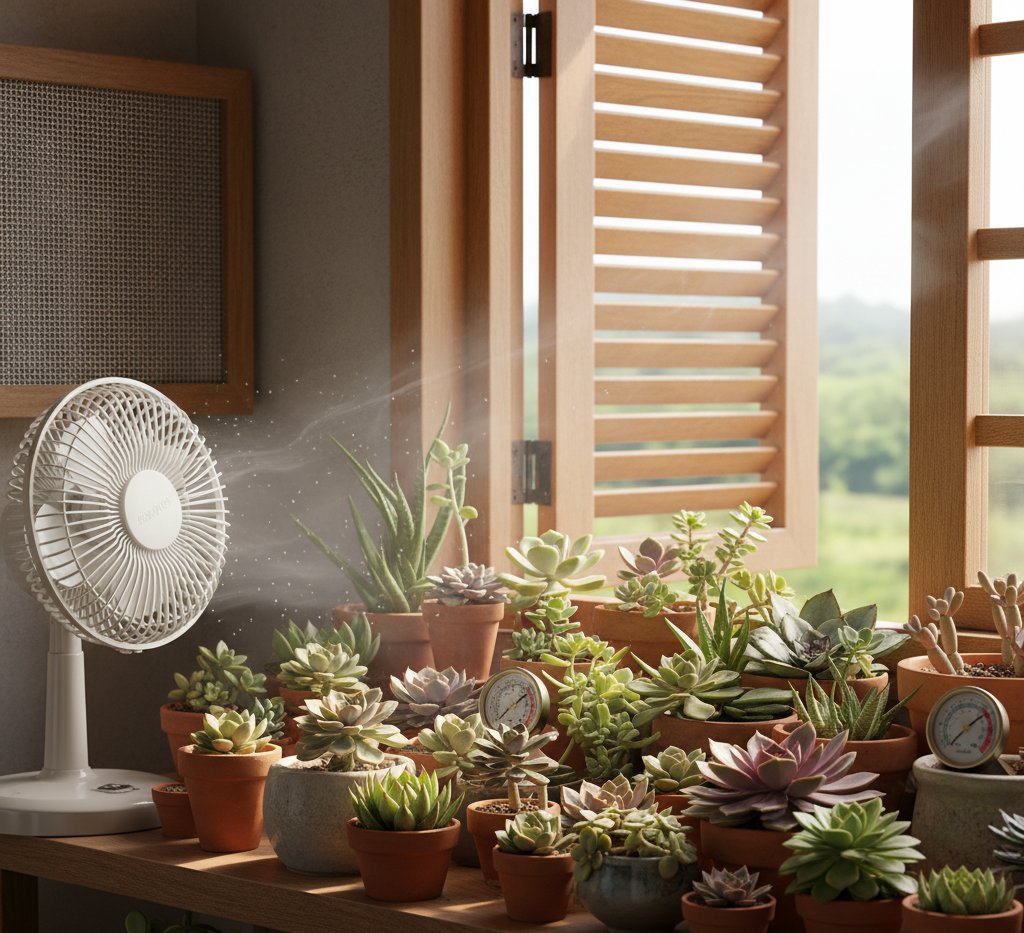Ventilation For Indoor Succulents
Indoor succulents may look tough, but they depend on more than sunlight and careful watering to stay healthy. Airflow often gets overlooked, yet it plays a direct role in how well your plants grow. Proper ventilation keeps succulents strong by reducing excess moisture, balancing temperature, and preventing rot or pests.
When you improve air circulation, you create conditions that mimic the open, dry environments succulents naturally thrive in. Simple changes, like placing them near a window with a gentle breeze or using a small fan, can make a noticeable difference in their growth and appearance.
As you learn more, you’ll see how ventilation connects to every part of succulent care, from preventing common problems to choosing the right tools that make airflow easy to manage. This guide will walk you through why it matters, the principles behind it, and the methods that help your plants thrive indoors.
Why Ventilation Matters for Indoor Succulents
Good airflow supports steady growth, reduces the chance of disease, and helps balance the moisture around your plants. Without proper ventilation, indoor succulents can struggle with weak growth, excess humidity, and soil that stays damp for too long.
Impact on Plant Health
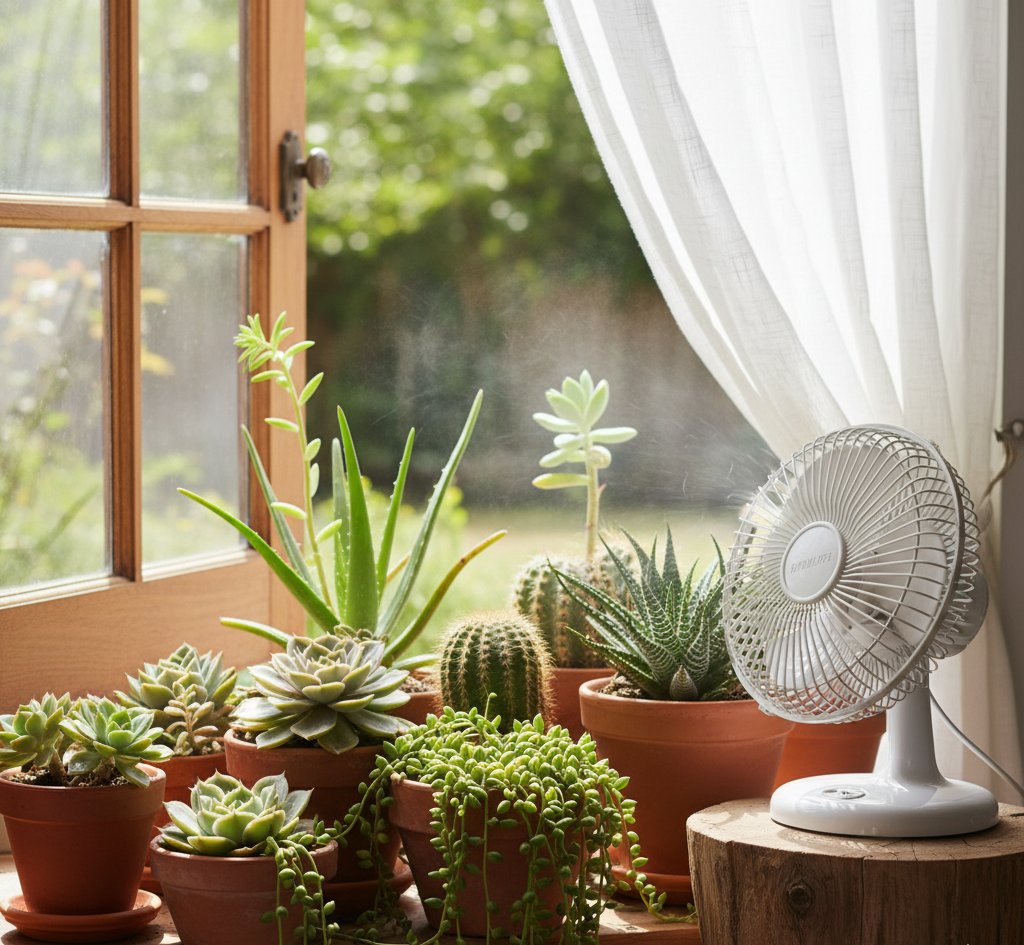
Ventilation helps your succulents get the fresh air they need to stay strong. When air moves freely, it prevents stagnant conditions that can weaken leaves and roots. Fresh air also supports better gas exchange, which is important for photosynthesis.
Indoor plants often sit in still air, especially in closed rooms. This can create an environment where heat builds up near windows or where humidity collects. By keeping air moving, you reduce stress on the plant and encourage steady, compact growth.
You can use a small fan on a low setting or place your succulents near an open window. Even a slight breeze makes a difference. This keeps your plants from stretching too much toward light and helps them maintain their natural shape.
Prevention of Fungal Diseases and Rot
Still air and damp soil create the perfect setting for fungal spores. Succulents are especially sensitive to this because their roots and leaves store water. Poor ventilation raises the risk of root rot and mold on the soil surface.
When you improve airflow, you lower humidity around the plant and keep the soil from staying wet too long. This makes it harder for fungi and bacteria to spread. It also reduces the chance of pests that thrive in moist, stagnant conditions.
Simple steps like spacing plants apart and avoiding crowded shelves help. You can also rotate plants to areas with better circulation or use a fan to move air gently around the room. These changes greatly cut down the chance of rot.
Role in Water Evaporation and Transpiration
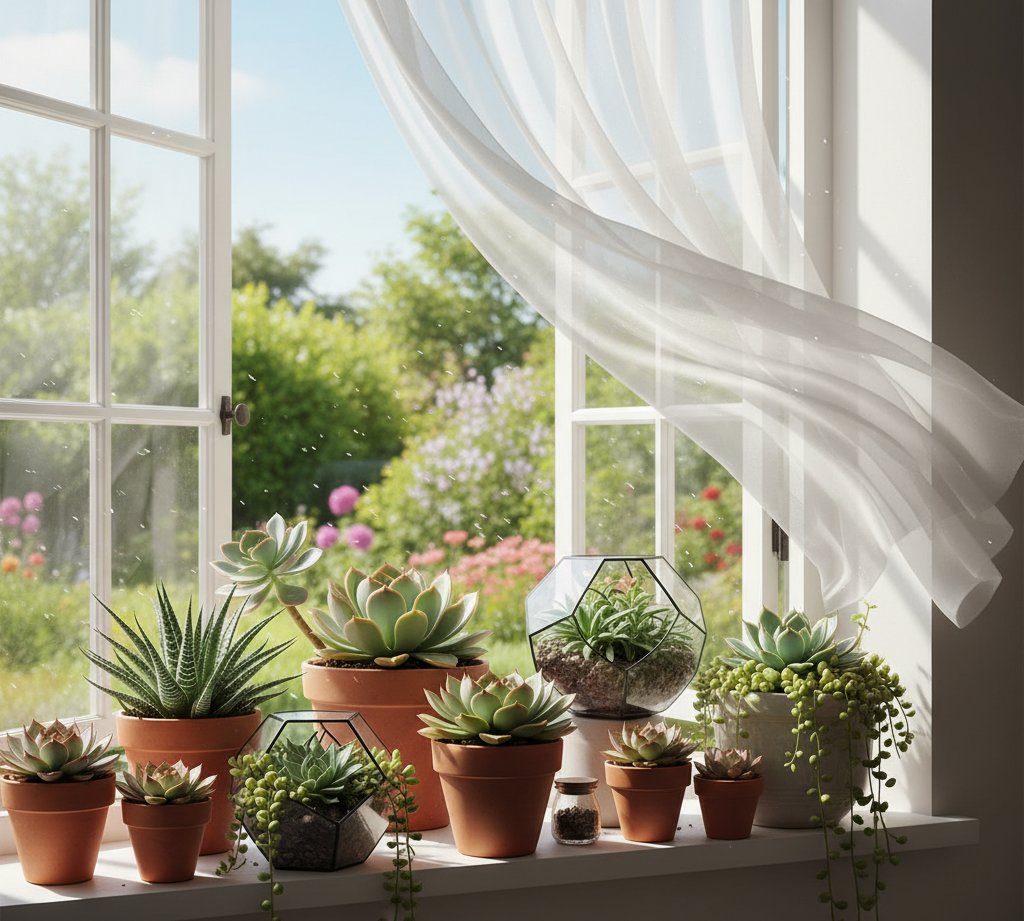
Air circulation plays a direct role in how quickly water evaporates from soil and leaves. Succulents need their soil to dry between waterings, and without ventilation, moisture lingers for too long. This can cause roots to stay wet and weaken over time.
Proper ventilation also supports transpiration, the process where plants release water through their leaves. Good airflow helps regulate this process, which keeps the plant’s water balance in check. Without it, succulents may hold too much moisture and become soft or swollen.
To manage this, place your plants in areas where air moves naturally, such as near a window with a light breeze. If natural airflow is limited, a small fan can help speed up evaporation and maintain healthier soil conditions.
Key Principles of Ventilating Indoor Succulents
Healthy indoor succulents depend on steady airflow, proper placement, and enough space between plants. These factors reduce excess moisture, limit pests, and help your plants adjust to indoor growing conditions.
Balancing Sunlight and Airflow
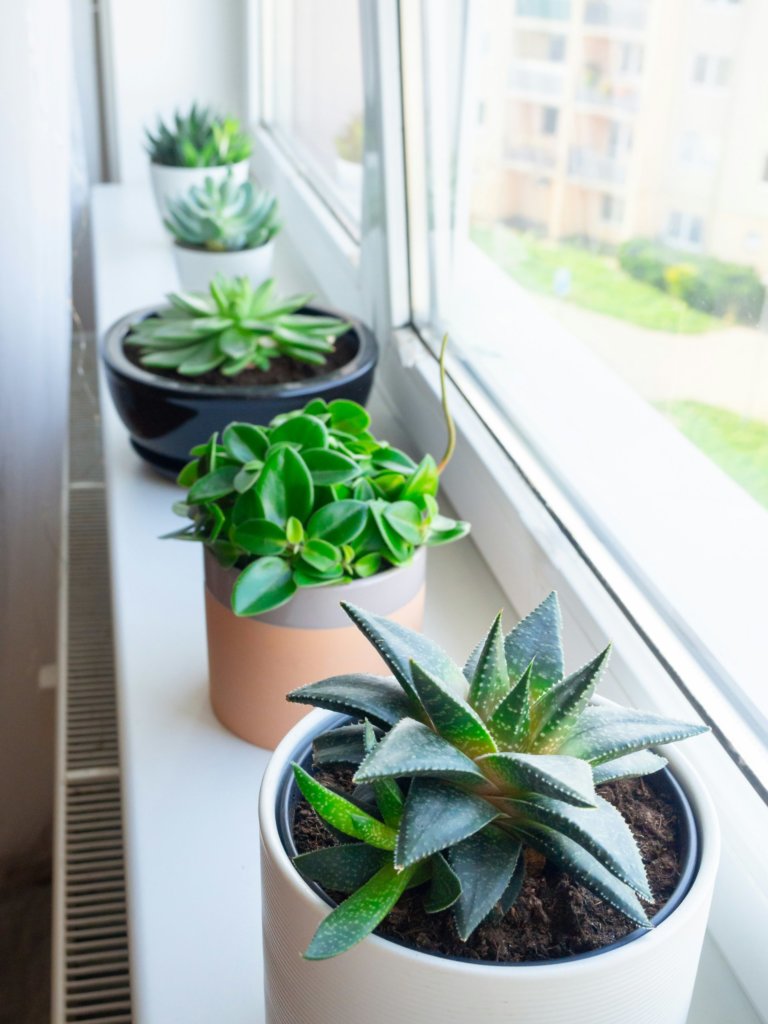
Succulents need bright light, but strong sunlight without airflow can trap heat and stress the plant. A south-facing window often provides good light, but you should also make sure air can move around the leaves.
If windows stay closed, heat can build up quickly. In this case, a small fan on a low setting helps circulate air while preventing stagnant conditions. This balance keeps leaves cooler and reduces the chance of fungal growth.
You should also monitor how your plant reacts to changes. Too much direct sun without airflow can cause leaf burn, while poor light with airflow can slow growth. Adjust placement based on both light intensity and how well air circulates.
Choosing the Right Location
Where you place your succulents indoors directly affects their health. Rooms with natural airflow, such as near a window that opens, work best. Avoid sealed corners or areas with no movement of air, since these spots often stay damp.
A good location combines steady airflow with indirect or filtered light. For example, placing a plant near a window that you open regularly allows both light and fresh air to reach the plant. This reduces the risk of mold on soil and leaves.
If your home has limited airflow, you can use tools like ceiling fans or portable fans. Keep the fan on a low setting and avoid placing plants in a direct draft, which can dry them out too quickly.
Spacing for Optimal Air Circulation
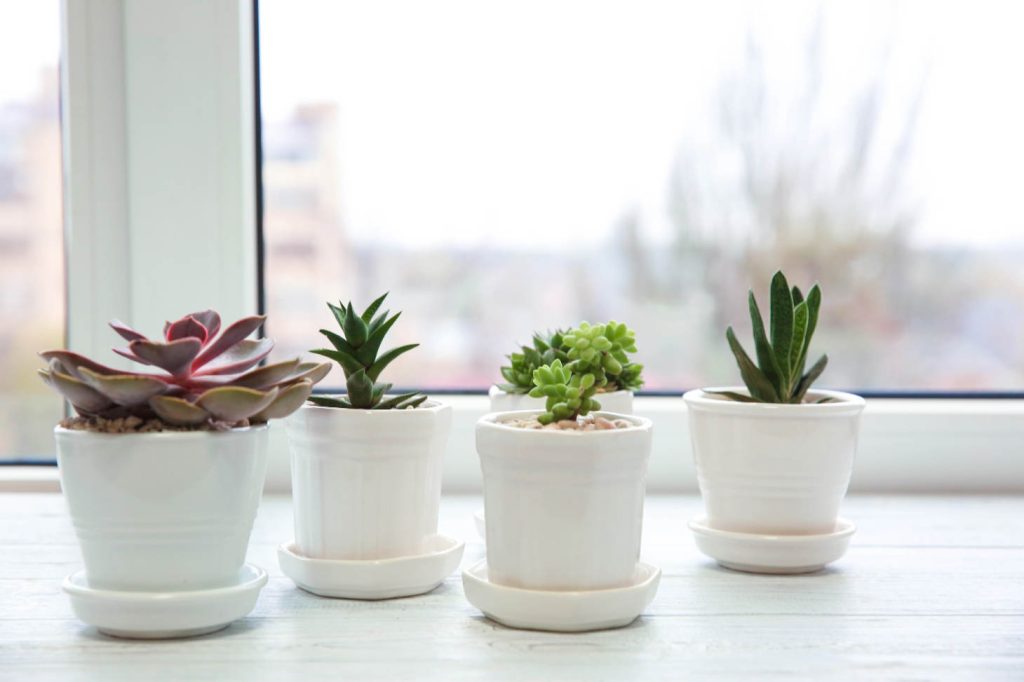
Crowding succulents together blocks airflow and traps humidity. To avoid this, leave a few inches of space between pots. This spacing allows air to move around each plant and keeps leaves from touching.
Proper spacing also limits the spread of pests. If one plant develops mealybugs or fungus, airflow and distance reduce the chance of it spreading quickly.
You can organize plants on shelves or stands to create vertical spacing. This setup improves airflow in small areas and still allows each plant to get enough light. Consistent spacing makes maintenance easier and supports healthier growth indoors.
Ventilation Methods and Tools for Succulent Care
Good airflow reduces excess moisture, prevents fungal growth, and keeps pests from settling in the soil. You can achieve proper ventilation indoors with simple tools like fans, vents, or open windows, depending on your space and setup.
Using Oscillating Fans Effectively
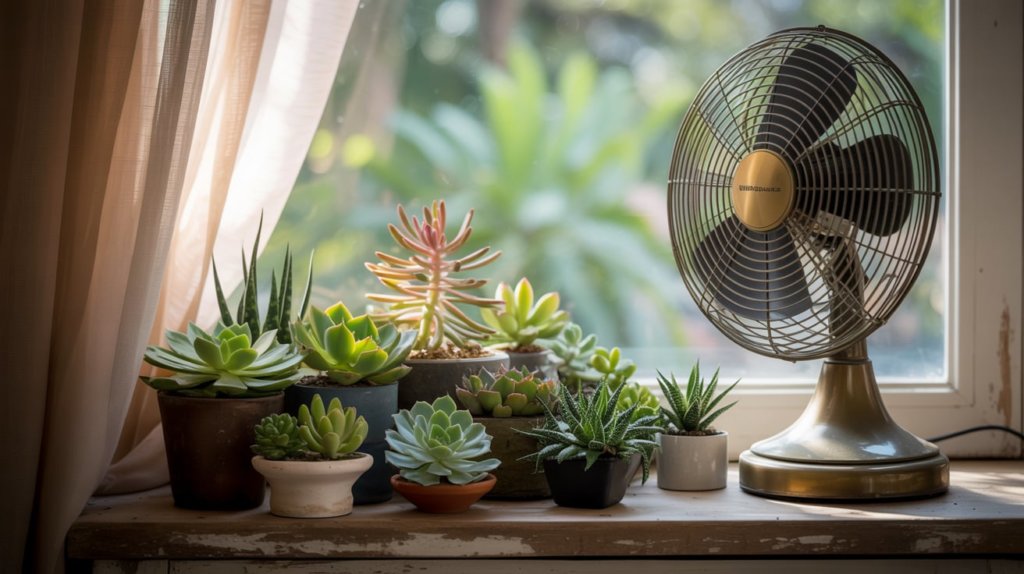
An oscillating fan helps move air evenly across your plants. Unlike a fixed fan, it shifts direction, so no single plant gets constant airflow that could dry it out too quickly. Place the fan a few feet away to avoid direct wind that stresses leaves.
Run the fan for a few hours each day, especially after watering. This helps the soil surface dry faster and lowers the chance of fungus gnats. If your space is large, consider using multiple smaller fans instead of one strong unit.
Keep the fan clean and dust-free. Dust buildup reduces efficiency and can blow particles onto your plants. A simple wipe-down every few weeks keeps the airflow consistent.
Selecting Exhaust and Ventilation Systems
Exhaust systems are useful if you grow succulents in a closed room or greenhouse. A small inline fan or wall vent can pull out humid air and lower the risk of mold.
Choose a system based on the size of your growing area. For small rooms, a bathroom-style exhaust fan may be enough. Larger setups may need ducting to move air in and out efficiently.
Pairing exhaust fans with intake vents ensures balanced airflow. Without intake, the fan may struggle to replace the removed air, leaving circulation incomplete.
Natural Ventilation Techniques
If you prefer a low-cost method, you can rely on natural ventilation. Opening windows or doors for part of the day lets fresh air flow through the room. Cross-ventilation works best, so try to open windows on opposite sides when possible.
Natural airflow helps regulate humidity levels and prevents stagnant air pockets. This is especially helpful in mild climates where outdoor air is not too humid.
You can also raise plants slightly off the ground with stands or shelves. This allows air to circulate around the pots, reducing moisture buildup at the soil level.
Common Issues and Troubleshooting Poor Ventilation
Poor airflow around indoor succulents can lead to fungal growth, pest infestations, and slower growth. You can avoid these problems by noticing early warning signs, spacing plants correctly, and adjusting care routines when humidity and temperature shift.
Signs of Inadequate Airflow
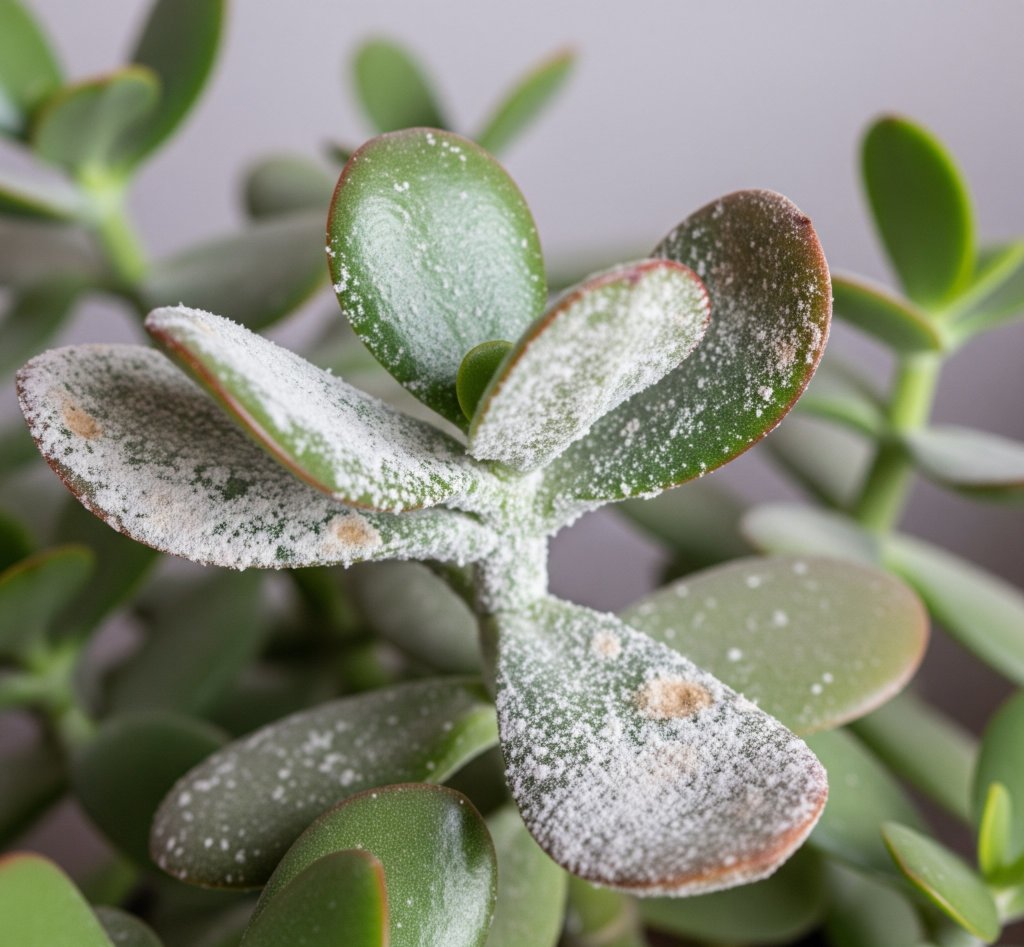
When air circulation is low, you may see mold or mildew on the soil surface or leaves. This often appears as white or gray patches. Another clear sign is persistent damp soil that takes too long to dry.
Succulents in stale air may also show yellowing leaves, soft stems, or sudden leaf drop. These symptoms often mimic overwatering, but the real issue is trapped moisture.
Pests like mealybugs and fungus gnats thrive in stagnant conditions. If you notice recurring infestations even after treatment, poor airflow is likely contributing.
A quick check is to place your hand near the plants. If the air feels still and heavy, the space likely needs better ventilation.
Solutions for Overcrowded Spaces
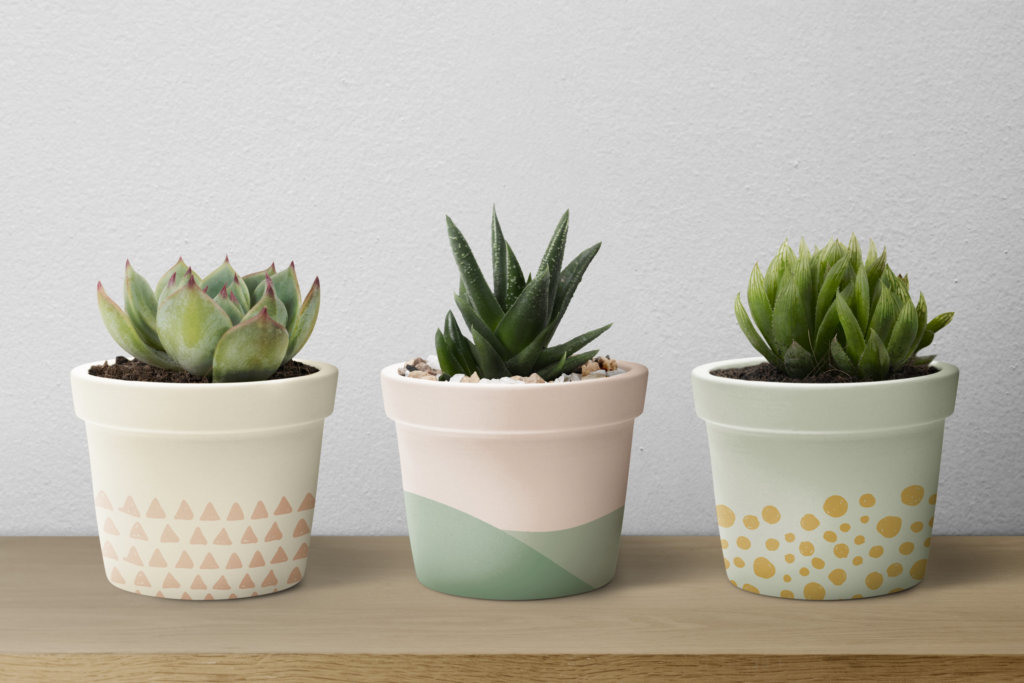
Placing succulents too close together limits airflow and raises humidity between leaves. Start by spacing pots at least a few inches apart to let air move freely.
Choose pots with drainage holes and avoid heavy containers that trap moisture. Grouping plants on open shelves instead of closed surfaces also improves circulation.
If you have many indoor plants, use a small oscillating fan on a low setting. Position it so that air moves gently across the plants without blowing directly on them.
Rotating plants every few weeks ensures all sides receive air and light. This reduces the chance of mold forming on shaded, crowded areas.
Adjusting Care for Seasonal Changes
Airflow needs shift with the seasons. In summer, higher temperatures and humidity can trap heat indoors. Open windows when possible or run a fan to keep air moving.
During winter, heating systems dry out the air but also reduce circulation. Place succulents away from heating vents, as direct hot air can stress them.
You may need to reduce watering in cooler months since slower evaporation means soil stays damp longer. Check moisture levels before watering instead of following a fixed schedule.
In spring and fall, when humidity fluctuates, monitor your plants more closely. Adjust spacing and airflow as needed to prevent sudden outbreaks of mold or pests.
Frequently Asked Questions
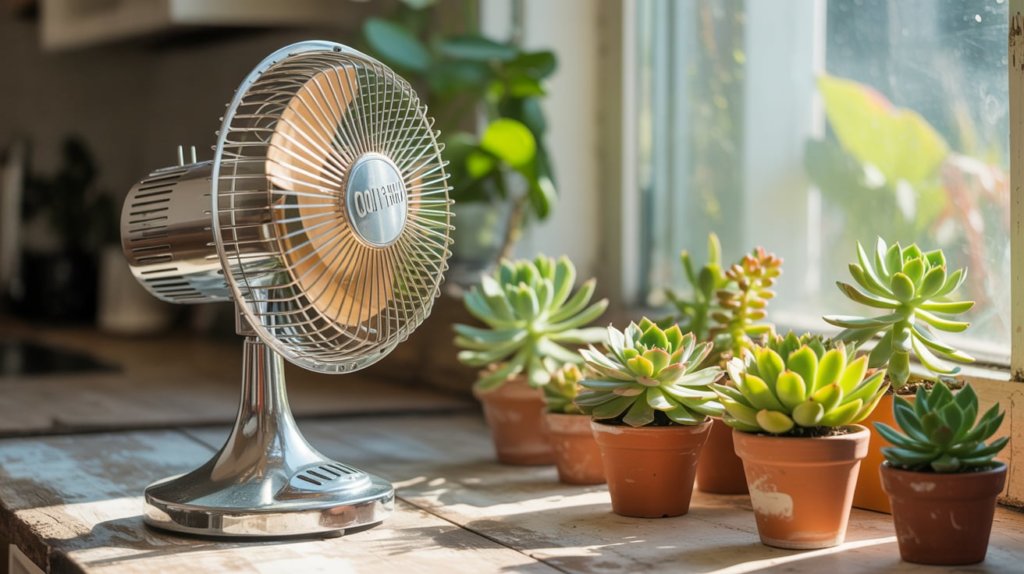
Good airflow reduces excess moisture, lowers the risk of pests, and keeps your succulents healthier indoors. The way you manage ventilation depends on your plant setup, the season, and the tools you use.
How often should air circulation be provided for indoor succulents?
You should provide air circulation daily. Opening a window for a short time or running a small fan on low helps refresh the air. Even brief airflow each day supports healthy growth.
What are the signs of poor ventilation affecting succulent health?
Watch for yellowing leaves, soft stems, or mold on the soil surface. You may also notice fungus gnats or other pests when the air is too still. These issues often point to excess moisture caused by poor airflow.
Can succulents thrive in low-airflow environments?
Succulents can survive in low-airflow spaces, but they rarely thrive. Stagnant air increases the chance of rot and pest problems. Consistent ventilation helps them stay strong and grow well.
What are the best practices for ventilating a terrarium with succulents?
For best results, use an open terrarium or a container with ample ventilation. Succulents thrive in arid conditions, so it’s crucial to avoid sealing them in airtight containers, as trapped humidity can cause them to rot. If a closed terrarium is used, it should be opened frequently to prevent moisture buildup and allow for air circulation.
How does seasonal change affect indoor succulent ventilation needs?
In summer, you may need more airflow to balance higher heat and humidity. In winter, indoor heating can dry the air, so shorter periods of ventilation are usually enough. Adjust based on how your plants and soil respond.
What type of fans or tools are recommended for proper succulent ventilation?
A small desk fan or clip-on fan set to low speed works well. Place it a short distance from your plants so the airflow is gentle. You can also rely on natural airflow from open windows when the weather allows.

